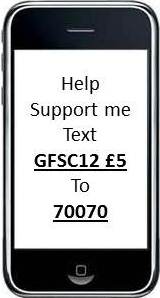
From Terminal 1 to Museum of Aeronautical Science: Then walk from the museum along the road to spot 1 for about 10 minutes. After passing that spot, just follow the same street a few metres in southeast direction until you see another visitors’ hill.īy public transport – All times might change within time! At Terminal 1 catch a bus from bus stop number 30 on level 1F (be aware: also different lines depart here). 50% of landings and most departures due to its length.īasically the same road access as spot #2. Some exceptions like FedEx or Nippon Cargo. Landings on 16L tend to be more common in summer months than winter.įor approx. In the morning hours almost all arrivals on this runway, even 747s. Hotel (Spot 5) you can follow the runway action.įor approx. There are various hotels around the airport. At spots 1, 3 and 5 you can find vending machines for soft drinks. Inside terminal buildings and at Spot 1 and 3. For more information, please refer to the JAF webpage The international licence will not be accepted.
#Narita boy length drivers#
Citizens from several countries need to carry an official translation of the national drivers license. Car rentals in Japan follow strict legal requirements. But due to runway changes it is not really recommend. Not required as Public Transport is to all spotting locations. Written by Maximilian Ono, Jan Seba, Hendra Barnes, David Will and Gary Culpan (Last Visit June 2018) Rating Good weather is common at this airport, but during the hot summer months you sometimes have to face misty conditions or heat distortion.įurthermore NRT is a big cargo airport served by ANA Cargo, Nippon Carg, FedEx, UPS, Polar (DHL), Air HongKong, Cathay Cargo and many more.

American and Air Canada also serve NRT on a daily basis or even more often. are Delta and United with many flights per day and several aircraft types to various destinations.



Long Haul operators includes the common carriers from Europe, Emirates, Qatar Airways, Etihad and Turkish Airlines from the Middle East as well as Aircalin, Air New Zealand, Qantas and Jetstar from Oceania. The major carriers of the Far East serve the airport as well as various smaller Chinese and Korean operators. Other local operators include home carrier ANA as well as Jetstar Japan, Peach and Spring Airlines Japan. Japan’s second biggest airport is the international hub for both ANA and JAL. As the road access is often congested you should calculate at least 1 hour of travel by car. 60 km northwest of Tokyo in the city of Narita in Chiba prefecture. Within the last years, the number of domestic services increased as well. Up to now, Narita handles the majority of overseas operations out of the Tokyo-Yokohama region. The airport is responsible for most International flights in Tokyo and you will see almost every popular carrier serving NRT. New Tokyo International Airport (RJAA / NRT), commonly known as Narita, was constructed in the 1970ies to take over international services from Haneda Airport.


 0 kommentar(er)
0 kommentar(er)
